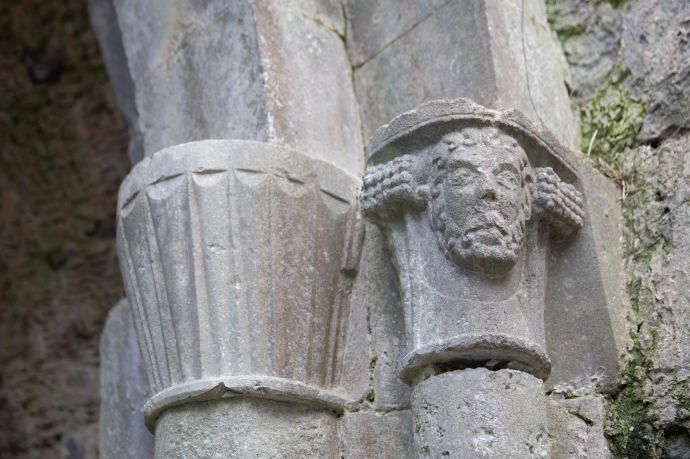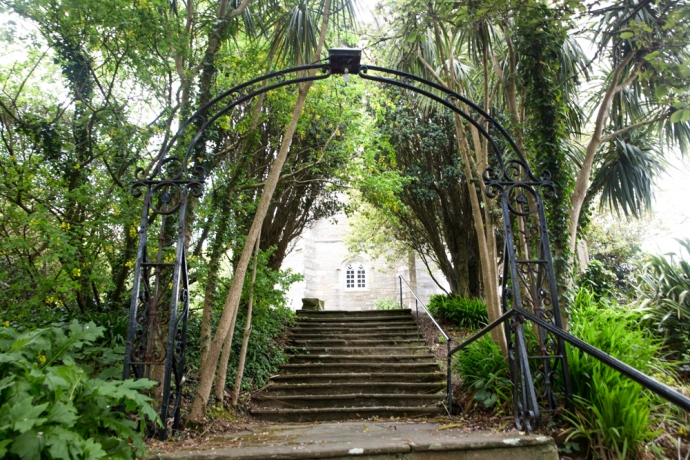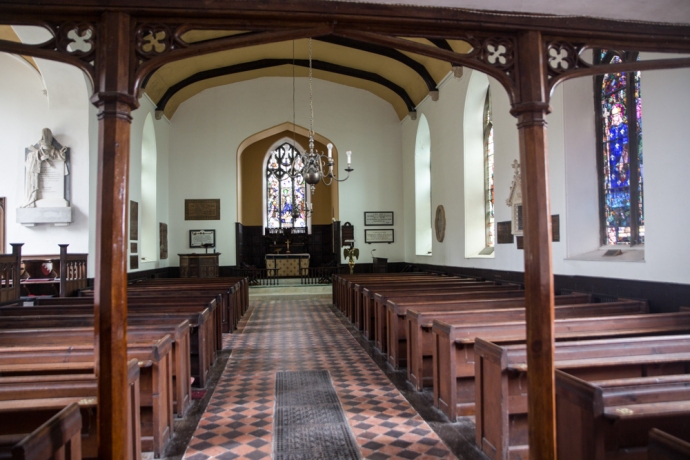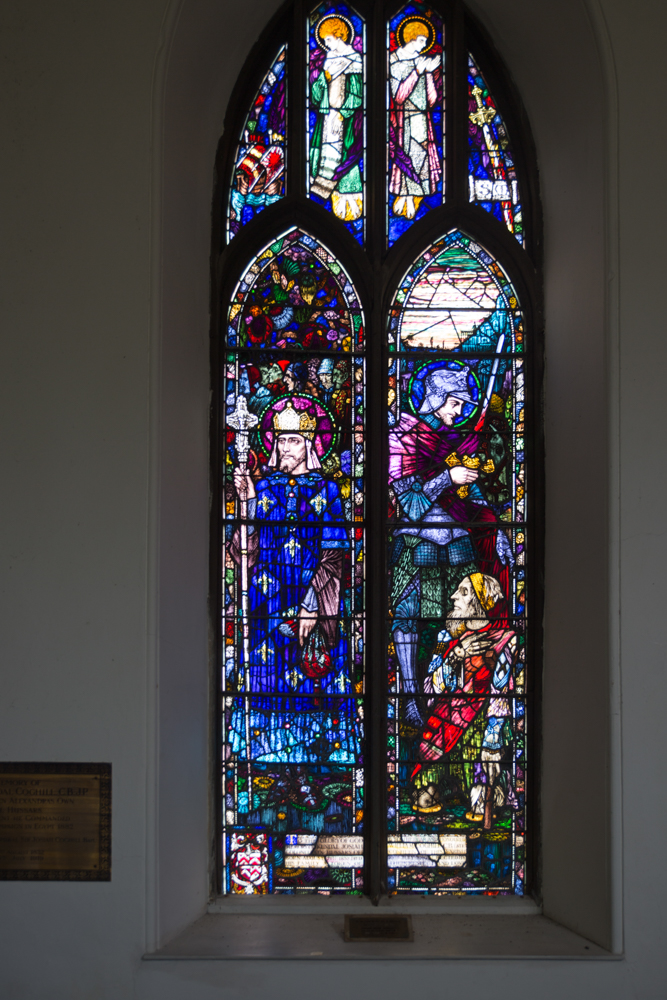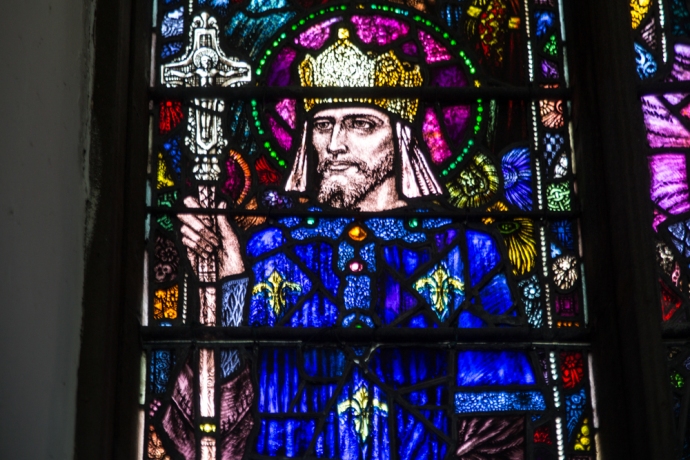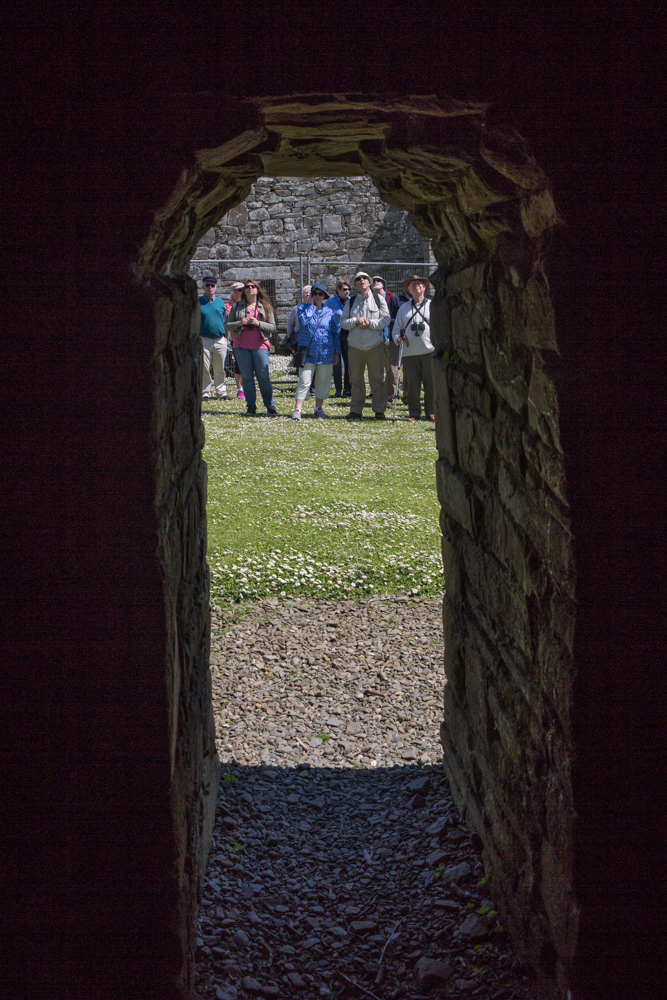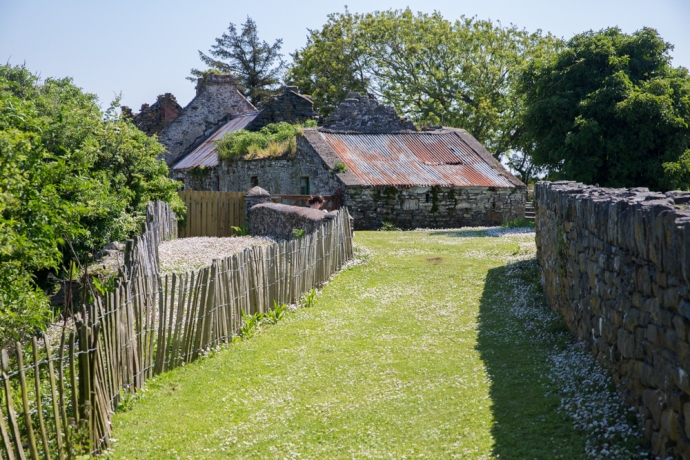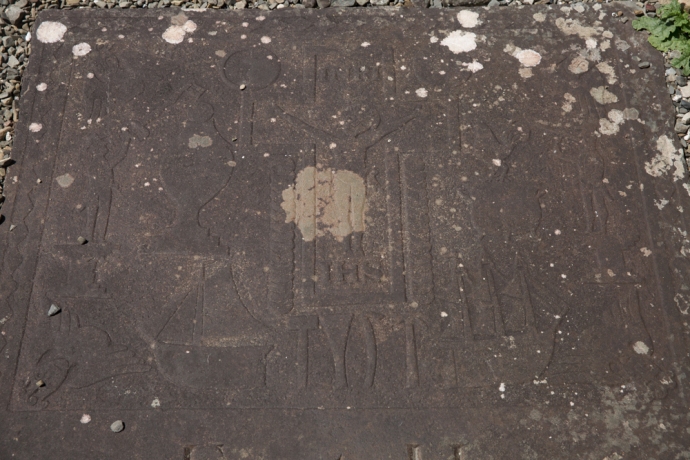I left you at the end of Day 3 with me pulling into a parking bay at Sally Gap in the Wicklow Mountains at around 2 am. That was my bed for the night. After a very broken four hours of, what could only loosely be described as sleep, during which my poor little car was buffeted constantly by winds and rain, my hopes (and my reason for spending the night up here) of glorious sunrise shots were somewhat dashed. The rain had stopped but the hills were lost in mist and only the sheep seemed to be happy.

Good Morning. Sally Gap, Wicklow
It was now 6:30 am. I was here now, and sun was predicted to arrive around midday. So there was nothing for it but to wait. I walked, I drove and, once my fingers had warmed up I practiced the whistle. And waited at the Roof of Wicklow, until eventually the sun began to make tentative forays. The plus side of it was that there was a lovely soft light for photographing the hills and valleys, waterfalls and the gorgeous heather and I tried to make the best of that.

The wild mountain heather in the early morning mist

Will ye go Lassie go?

To pluck wild mountain thyme

All around the bloomin heather

By yon pure crystal fountain
By 10 am I was rewarded, and I discovered Lough Tay sparkling in the dappled light. Lough Tay is also known as Guinness Lake (because of its resemblance to a pint of the dark stuff complete with its creamy head). The sand though is not original. It was brought in from the coast by the owners (surprise, surprise, the Guinness family). There is no doubt it deserves its spot as one of the most photographed views in Wicklow. It is a corrie lake that lies in a glacial valley at the foot of Luggala Mountain. Luggala Estate, historic home of the Guinness’, is part of the estate and lies in the verdant valley to the north.

Lough Tay, Guinness Lake. The Guinness mansion (the only building in the picture) is on the far right.
I am glad I waited, but it was time to move on now and I headed on to Glendalough.
The main purpose of the visit was to see the old mine workings. But as I drove through the tiny village I heard the sound of pipes. I had to stop. I stood and listened to the lone piper sitting under a blue sky, next to a spectacular double arched gateway.

Pat Connery, lone piper at the gateway to Glendalough

Singing and playing the pipes is not easy. Pat Connery at Glendalough
This was Pat Connery and it was beautiful playing, lost for the most part on an unappreciative crowd, who would scurry past, stop to snap a selfie and head up the steps and through the gate, intent on getting back to the bus on time. I chatted to to Pat, who has been playing this spot for years. She was using a set of C pipes, which for the uninitiated have a deeper more plaintive sound than the regular concert pitch pipes. She also sang beautifully, while playing (no mean feat).
Thanking Pat I too headed up those steps. What I hadn’t realized was that this was the portal to the Glendlough monastic ruins. In fact it is Ireland’s only surviving example of such a medieval gateway. I hadn’t intended to stop as I had visited five years ago but hey the music, the sunshine, a warm Irish day; how could I not pop in for another look. I never posted photos of Glendalough back then because I wasn’t happy with them. Here was my chance to fix that.
Glendalough is truly special. Wandering its many sites and catching glimpses of its magic mountain setting will be, despite the fact that half of Europe, America and Asia are there with you, one of your treasured memories of Ireland. Even the name is evocative as it comes from the Irish Gleann da locha (Glen of the two lakes) The site was founded by St Kevin and most of the surviving buildings date from 10th to 12th Century. That’s old. Since then it has experienced attacks from the Vikings, the sacking of the monastery in 1214 by the Normans and its total destruction by the English in 1398. Reconstruction of some of the ruins was started in 1878 and now you can visit a round tower, seven churches, two High Crosses and much more. I’m not going to go through all its attractions but I have selected just a few pictures to give you, my readers, some idea of the extent of these ruins and the calming ambience that you will feel when you are there.

One of the best round towers in Ireland. Beautifully preserved and original except that the roof was rebuilt in 1878 from stones that had fallen. Built 10th century.

View of Glendalough past St Kevin’s Kitchen (wasn’t a kitchen) to the mountains beyond.

View of the cathedral, built between the 10th and 13th century. THe round tower perfectly framed through the window.

St Kevin’s Kitchen I. It was in fact a church.

St Kevin’s Kitchen II. Note the corbelled stone roof. Same technique as used in beehive huts.

Inside the cathedral showing beautiful stonework on the archway.

One of two high crosses. One is in the Visitors Centre. This one sits in place in the cemetery. It is unadorned and known as St Kevins Cross and was carved from a single piece of granite.

The Priests’ House. Reconstructed from the original stones based on a 1779 sketch. Compelte with romanesque arch.

Archaelogy at the site continues today with a team at work from UCD.
Now I headed to the trailhead for the Miners Way. It leaves from the eastern end of the Upper Lake where there is a beautiful beach (this time natural I think) and skirts the northern bank. I had the tall straight timbers of a Scots Pine forest on my right and the deep blue waters of the lake on my left.
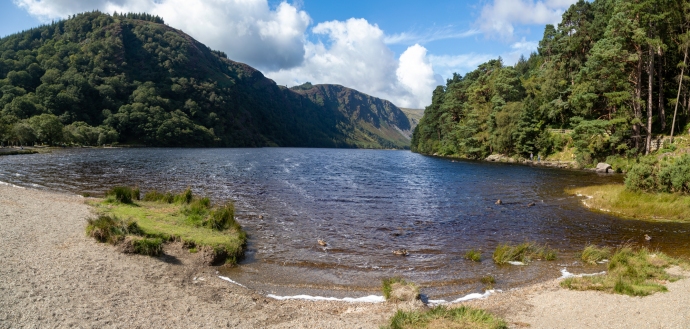
View from the beach at the east end of the Upper Lake at Glendalough. Looking west.

The Miners’ Way walk takes you along the northern bank of the Lake through a Scots Pine forest
As I approached the end of the lake it opened up to a stunning U-shaped valley carved by a glacier 15,000 years ago.

At the western end of the Upper Lake. A classic U shaped valley carved by a glacier.
Another kilometre on and the ruins of the mine buildings come into view.

View of the ‘Mine Village’. Actually the mine processing plant.
They call it the ‘Mine Village’ but its not really. It is the ruins of the processing plant the ore extracted from the surrounding hills was processed and the lead and silver removed. No one actually lived here; it is believed the mine workers walked in every day from Larragh a distance of 6 km. What is preserved here are the remains of the ore dressing floor (dressing is another name for processing whereby the ore is crushed, chemicals are added that assist in separating the ore from the waste, and then it is filtered and dried). The most prominent building is the ruin of the the Cornish rolls crusher house, built in 1855. Part of it was recently rebuilt in an effort to forestall further deterioration. The rolls crusher mechanism itself is well preserved and lies a short distance away on the valley floor. It is such a thrill to wander round these ruins.

View of the crusker on the left and mine buildings on the right. Old shafts and mullock heaps can be seeon on the ridge, A tramway (nothing remains) brought the broken ore to the crusher

A view of the mine area from the west looking up the Upper Lake. The white heaps are tailings (material that remains after the valuable minerals are removed)

The Cornish Rolls Crusher building

It is said that this is the best preserved example of a Cornish rolls crusher in Ireland.

Tailings from the Glendalough processing plant. Timbers in centre of picture are believed to have supported the tramway used to transport ore from the mine shafts.

A specimen of lead ore showing galena.
Mining also took place in the Glendasan Valley to the north of Glendalough on the other side of Camaderry Mountain. The main mineral vein cuts through the mountain between the two valleys and mine workings along the veing connected the two valleys.
So I had to go and have a look there. Another beautiful U-shaped valley greeted me. This time however we are at the top of the valley where there are the remains of another ore dressing plant. I can see other mines in the distance and on the mountain sides so I followed the river downstream.

Glendasan Valley. View down the valley from the ruins of the Hero Mine processing plant
Unfortunately the telltale evidence of historic mining along the river does not tell a pretty story of environmental responsibility. Much of the mining is very old, nearly 200 years, so I suppose that is some excuse, but some dates from the middle of the 20th century when they should have known better, Tailings and waste stockpiles are scattered along the river valley and, in places, the river flows right through them or has found a path around them. Considering the high levels of lead, one can only speculate on what this has done to the water quality. There is no way approval would be given for a mine treatment plant to operate on the bed of the river theses days.

Glendasan Valley with tailings and mine spoil in the river bed

Glendasan Valley

Mine workings on the north side of the Glendasan Valley and the processing plant ruins on the river bed.
One last story that I came across during my reserch. With the increase in the mining workforce in the 1850s, demand for housing increased and the mining company built some houses for their workers. One row of houses close to the mining works is said to have once housed eight musicians and was thus given the name ‘Fiddlers Row’. Love it.

This row of houses was built in the 1850s and housed mine workers. Due to the number of musicians it was known as Fiddler’s Row.
After walking maybe 10km around these two sites I was totally exhausted and a bit of a chill was coming into the air so well satisfied, I decided to end my jaunt here.

The unusual bridge across the Glendasan River
A four day journey across the country and through 5,000 years of history. Thanks for coming on the trip with me. I hope I have planted a little seed for those who have never been here and for those who know this place well, maybe I have given you some new ideas or a changed perspective.
For the time being that is the end of my travels in Ireland. But there will be more. Ireland’s like that – you keep coming back. Try and keep me away.





